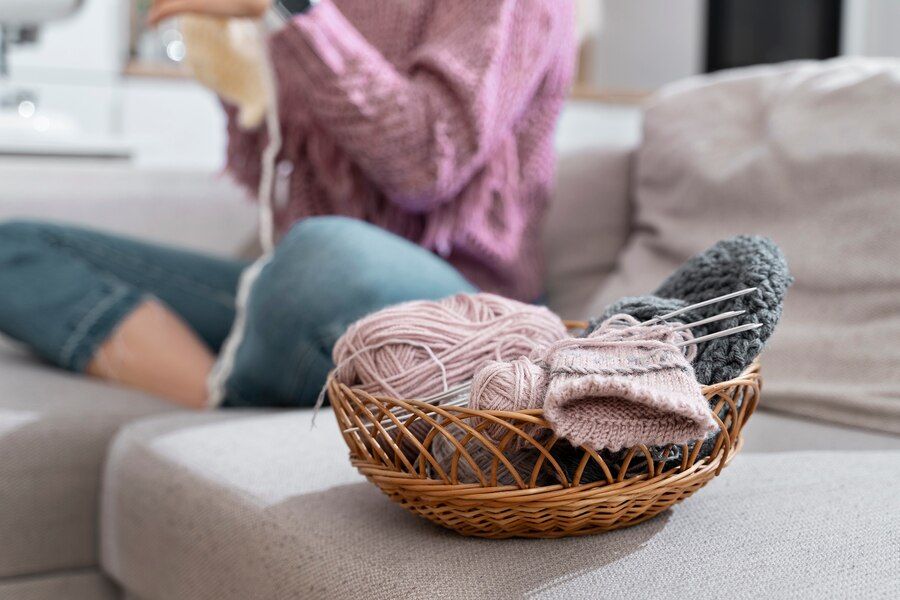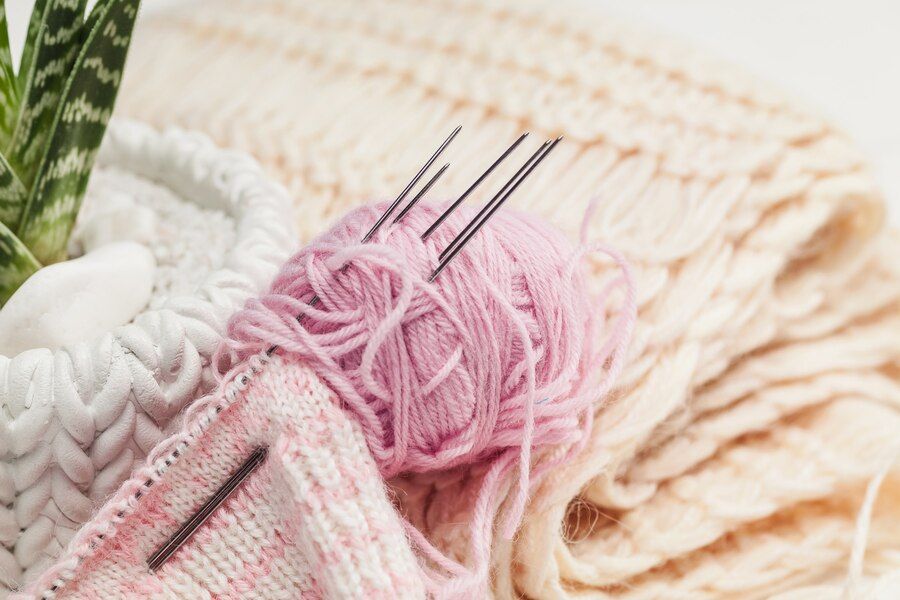
Get Latest Quotation
Can You Use Acrylic Yarn to Make Dishcloths?——Let’s Find Out in Zhink
So here comes the questions: Can you use acrylic yarn to make dishcloths? What is the best yarn to use for crochet dishcloths? and How to make dishcloths with yarn? Let’s unravel the secrets of choosing the best yarn for crochet dishcloths, discovering the ideal hook size, and crafting your personalized masterpiece. Let's get hooked on creativity!
What is Acrylic Yarn?
Acrylic yarn is a synthetic fiber derived from polyacrylonitrile, widely chosen for knitting and crocheting due to its softness, lightweight nature, and an extensive array of colors. Its affordability positions it as a popular alternative to natural fibers such as wool or cashmere. This versatile yarn possesses advantageous qualities, including being machine washable and dryable, making it easy to maintain. Hypoallergenic properties make acrylic yarn a suitable option for individuals with sensitivities to natural fibers. However, drawbacks accompany its benefits. Acrylic yarn lacks the durability found in natural fibers like cotton or wool and is prone to pilling, forming small fiber balls after washing or wearing.
Using Acrylic Yarn for Dishcloths: Pros and Cons
When considering acrylic yarn for dishcloths, there are both advantages and disadvantages to take into account.
Pros of Using Acrylic Yarn for Dishcloths:
- Affordability: Acrylic yarn is a cost-effective option, making it budget-friendly for dishcloth projects.
- Variety of Colors: The wide range of available colors allows for creative and personalized dishcloth designs.
- Machine Washable and Dryable: Easy care is facilitated by the yarn's machine washable and dryable properties, crucial for frequently washed dishcloths.
- Hypoallergenic: Acrylic yarn is hypoallergenic, making it a suitable choice for individuals with allergies or sensitivities to natural fibers.
- Lightweight: The yarn's lightweight nature adds to the comfort of using dishcloths made from acrylic.
Cons of Using Acrylic Yarn for Dishcloths:
- Durability: Acrylic yarn is less durable than natural fibers like cotton, leading to a faster wear and tear of dishcloths.
- Pilling: The yarn is prone to pilling, resulting in the formation of small fiber balls that affect the appearance and effectiveness of the dishcloth.
- Harshness on the Skin: Some users may find acrylic yarn to be harsh on the skin, causing discomfort, especially with frequent use.
- Absorbency: Acrylic yarn is not as absorbent as natural fibers like cotton, making it less effective for cleaning purposes.
- Less Breathable: Being synthetic, acrylic yarn lacks breathability, potentially causing hands to sweat and feel uncomfortable during use.
In summary, while acrylic yarn can be utilized for dishcloths, it may not be the most suitable choice due to its limitations in durability, absorbency, and comfort.
Best Yarn to Use for Crochet Dishcloths: What to Consider?
Here are the factors you need to consider when choosing the right yarn for crocheting dishcloths:
1. Durability
- Opt for 100% cotton yarn to ensure resilience against wear and tear.
- Prevent issues like pilling, splitting, or breaking for a longer-lasting dishcloth.
2. Moisture Absorption
- Choose cotton yarn that is absorbent and capable of holding moisture effectively.
- Ensures the dishcloth can be used for drying dishes and other kitchen items.
3. Firmness
- Select a firm yarn for ease of crochet work and to avoid creating oversized, fluffy dishcloths.
- Consider blending with softer yarns if a softer touch is desired, but maintain firmness for practicality.
4. Colors
- Choose colors that resist fading over time to maintain the dishcloth's appearance.
- White and cream are popular choices, offering versatility and the option to bleach after use.
5. Budget-Friendly
- Cotton yarns are generally affordable, with larger skeins potentially offering cost savings.
- Worsted weight cotton yarn, a common preference, is usually priced around $3-4 per skein.
 What Size Crochet Hook to Use for Dishcloths?
What Size Crochet Hook to Use for Dishcloths?
Selecting the right crochet hook size for dishcloths is crucial for achieving the desired texture and finish. When working with worsted weight yarn, which is commonly used for cotton yarn dishcloths, it's advisable to follow the recommended hook size provided on the yarn label. For this weight of yarn, a size H/8 or 5mm crochet hook is generally suitable. This ensures that the stitches are neither too tight nor too loose, resulting in a well-balanced and functional dishcloth. Additionally, having a yarn needle on hand for weaving in ends is a helpful practice to ensure a neat and polished final product.
How to Make Dishcloths with Yarn?
Creating your own dishcloths through crochet is a rewarding and customizable project.
- Choose a crochet stitch that is solid and practical, ensuring good soap and water retention without excessive stretching. Stitch options like Suzette stitch, moss stitch, mesh stitch, or lemon peel stitch work well for this purpose.
- Commence crocheting the washcloth, beginning with a starting chain and the first row of stitches slightly smaller than your desired final size. Follow the stitch pattern chosen, repeating until you achieve a square or the desired rectangular length. Keeping track of the number of rows is essential for consistency, especially when making matching dishcloths.
- Enhance the dishcloth's structure and polished appearance by adding a border. For a simple border, single crochet across the last row, rounding the corners by working three stitches. If you prefer a frilly picot border, incorporate single crochet, chain 4, slip stitch in the first chain, and repeat around the entire dishcloth. Finish with a slip stitch to join the round, trim the yarn, leaving a 4-inch tail, secure the yarn, and weave in the ends using a yarn needle.
Conclusion
In conclusion, acrylic yarn offers affordability and vibrant colors but falls short in durability, absorbency, and comfort for dishcloths. Opting for 100% cotton yarn provides a better balance, ensuring resilience, moisture absorption, and practicality. And crafting dishcloths involves selecting solid stitches, maintaining size consistency, and adding borders for structure and aesthetics. Armed with this knowledge, crafters can create personalized and functional dishcloths with confidence. If you want to learn more about yarn knowledge, come to Zhink and consulate our experts!

